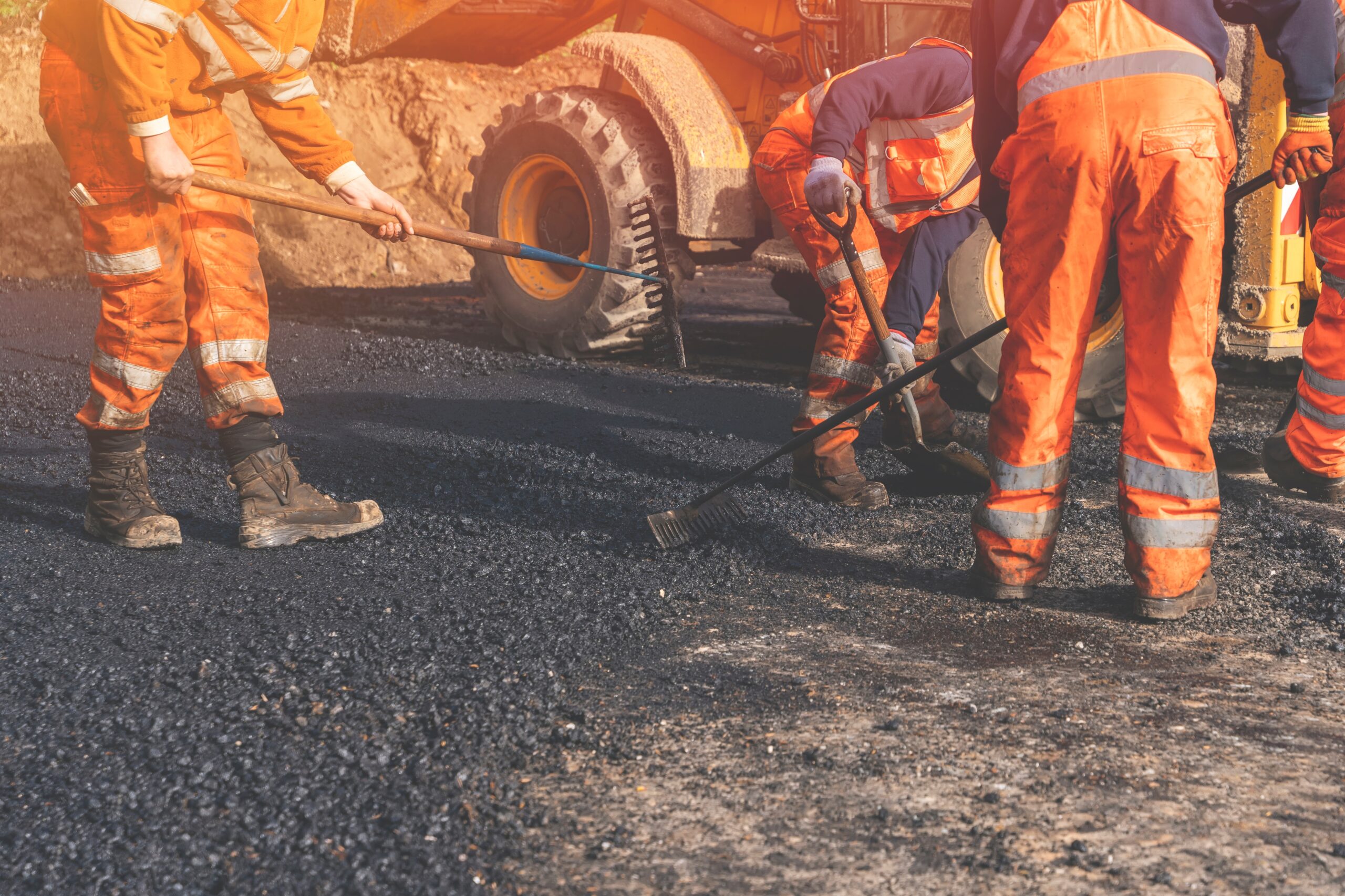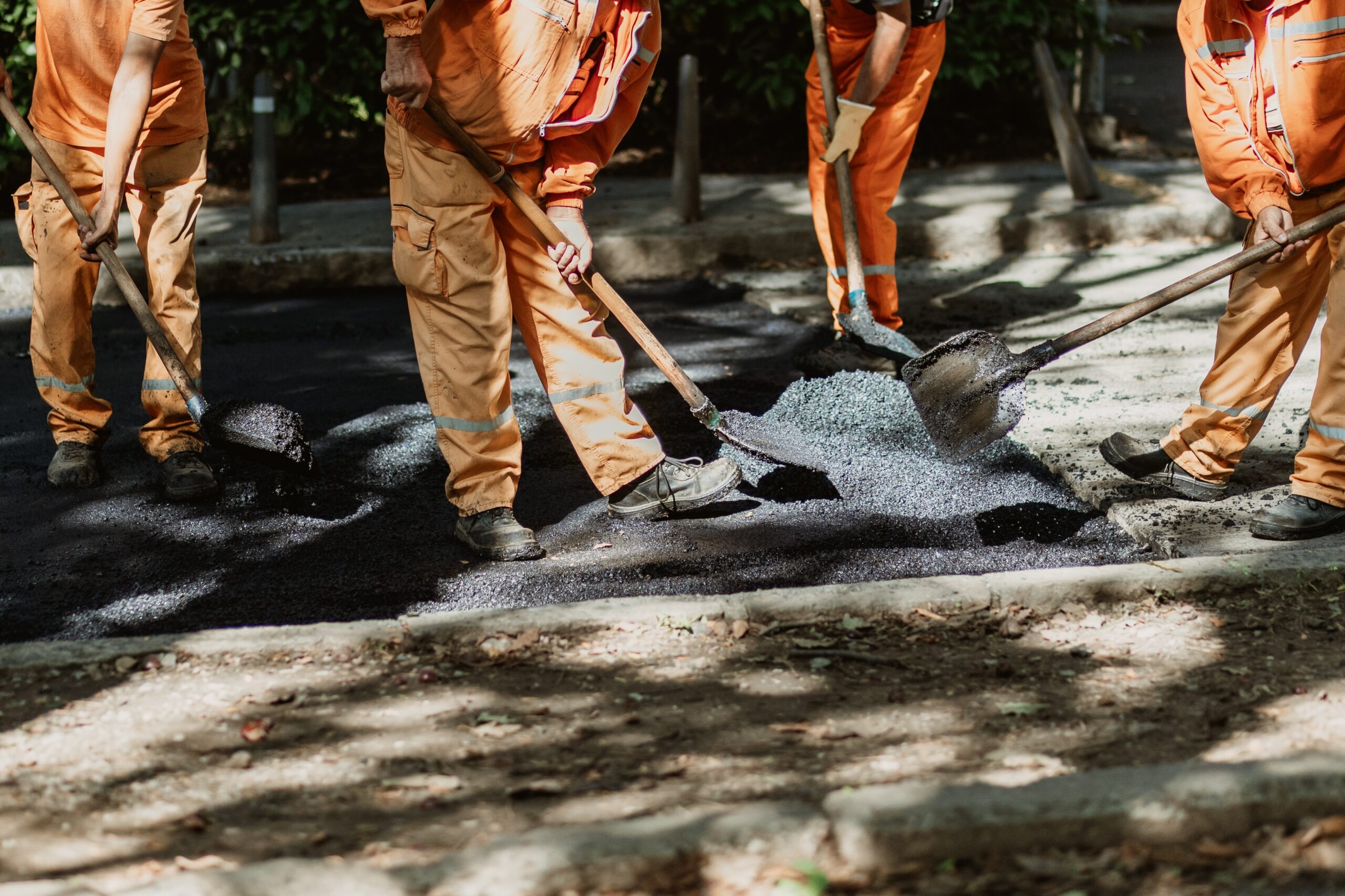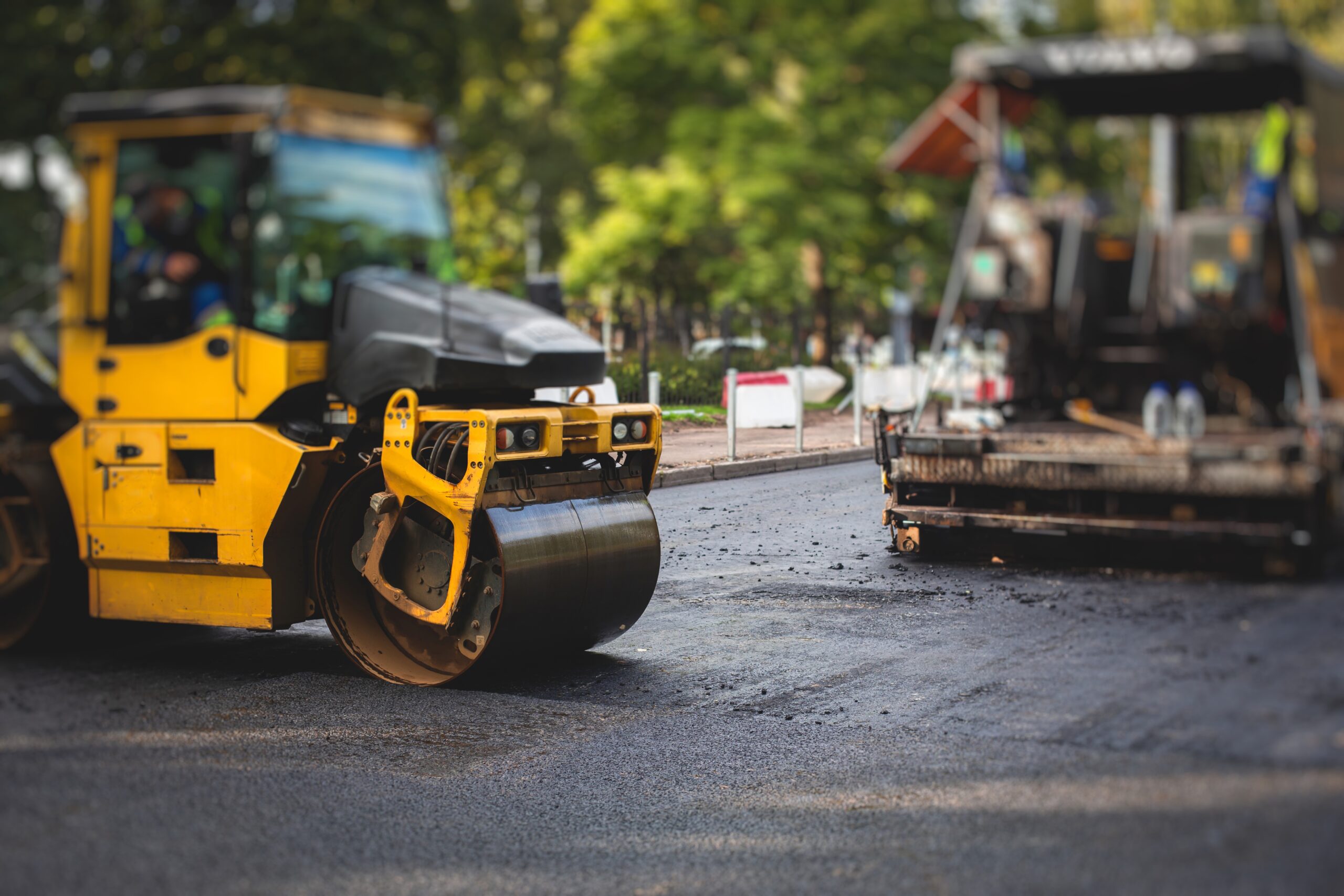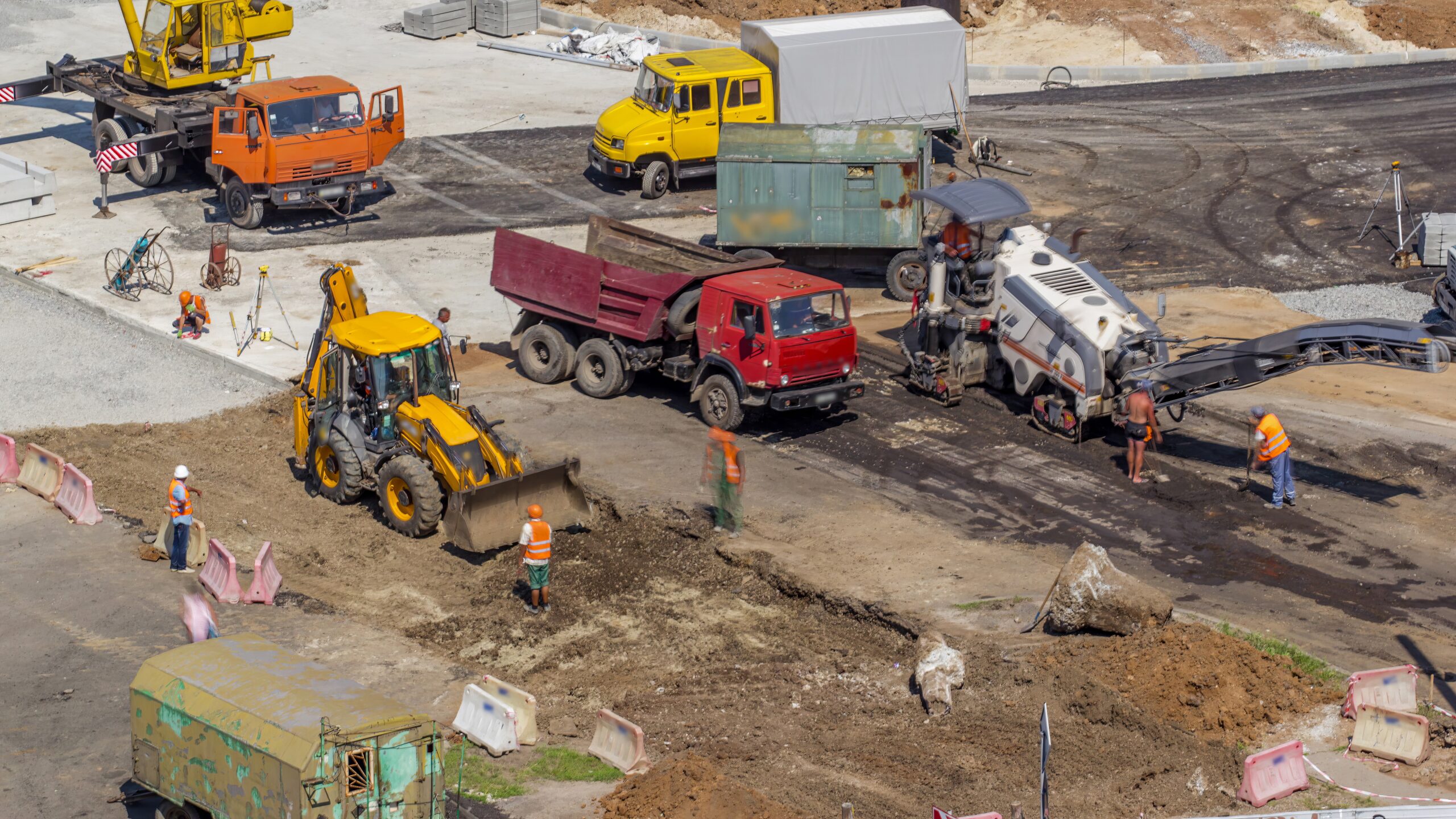
Asphalt is one of the most widely used materials for constructing driveways, parking lots, and commercial surfaces due to its durability and cost-effectiveness. However, the quality of asphalt construction has a direct impact on safety, lifespan, and appearance.
Poor execution can lead to premature cracking, structural failure, and increased maintenance costs. Property managers and business owners must be aware of common asphalt construction mistakes to avoid costly repairs and unsafe conditions.
When properly installed, asphalt surfaces provide smooth, long-lasting performance. However, faulty asphalt work often results from overlooked site conditions, material flaws, or installation errors that compromise the pavement’s integrity.
Poor Site Preparation
The foundation of any successful asphalt project starts with thorough site preparation. Neglecting this critical step increases the risk of uneven surfaces and early pavement failure.
Grading and Soil Stability Issues
Improper grading leaves the subgrade uneven, preventing proper asphalt placement. This can cause water to pool, leading to erosion, cracking, and subsidence. Soil stability is equally vital; without adequate compaction, the ground beneath the asphalt may shift, causing surface deformities and structural failure.
Drainage considerations must also be addressed during the site preparation process. Without proper water management, even well-laid asphalt can deteriorate quickly due to water infiltration and freeze-thaw cycles. This underscores why proper drainage is crucial for asphalt longevity.
Common Signs of Poor Site Preparation
It’s essential to recognize early warning signs of poor site preparation before they lead to severe pavement damage and increased repair costs.
- Uneven Asphalt Surfaces
If the subgrade is improperly graded, the asphalt surface will appear uneven. This creates weak spots, promotes faster wear, and leads to discomfort for vehicles and pedestrians.
- Water Pooling or Standing Water
Poor drainage or grading causes water to accumulate on the asphalt. Over time, this weakens the pavement structure, increases erosion, and shortens the surface’s lifespan.
- Cracks and Depressions Forming Soon After Installation
Early signs of pavement failure often indicate unstable soil or insufficient compaction, necessitating immediate attention to prevent further damage. These are often the signs your asphalt needs immediate repair.
Inadequate Material Quality
The quality of materials used in asphalt construction plays a significant role in durability and performance. Cutting corners with inferior products can result in pavement that deteriorates rapidly under the combined effects of traffic and weather exposure.
Using Substandard Asphalt Mixes and Aggregates
High-quality asphalt mix requires proper ratios of aggregate, binder, and filler. Using the wrong blend or low-grade materials increases the risk of material breakdown, premature wear, and cracking.
Aggregates must meet specific size and durability standards to ensure strength and longevity. Poor asphalt quality, such as excessive fines or contaminants, compromises structural integrity and can lead to early surface failure.
Indicators of Material Defects
It’s crucial to spot material defects early in any asphalt project to avoid costly repairs, safety hazards, and premature pavement failure.
- Crumbling or Loose Asphalt Surface
A deteriorating surface with loose material indicates poor-quality mix or improper material ratios, making the asphalt vulnerable to wear and weather.
- Frequent Cracking and Pothole Development
Low-grade materials cannot handle the stress of traffic and weather fluctuations, resulting in cracks, potholes, and reduced pavement strength.
- Noticeable Deterioration Within the First Few Months
Premature surface damage, such as raveling and disintegration, typically reflects material flaws, improper mixing, or contamination.
Incorrect Asphalt Thickness
Achieving the correct asphalt thickness is crucial for ensuring load-bearing capacity, particularly on commercial properties that experience heavy vehicle traffic. This is a vital part of the steps to building a strong asphalt parking lot.
Risks of Applying Insufficient Asphalt Layers
Thin asphalt layers lack the structural strength required for durability. Insufficient paving depth leads to rutting, fatigue cracking, and surface failure under stress.
Paving depth must align with the surface’s intended use. For example, parking lots and commercial driveways require thicker asphalt layers than residential pathways to withstand constant pressure from vehicles.
Consequences of Incorrect Thickness
Failure to apply the correct asphalt thickness can significantly reduce pavement performance, increase safety risks, and lead to higher long-term costs.
- Rutting and Surface Depressions
When asphalt lacks adequate thickness, vehicle loads create permanent indentations that collect water, leading to further damage.
- Cracks Appearing Under Normal Traffic Conditions
Early cracking under typical use indicates the asphalt layer is too thin to distribute weight properly, reducing the pavement’s life expectancy.
- Reduced Pavement Lifespan and Costly Repairs
Thin asphalt surfaces deteriorate more quickly, leading to increased maintenance costs and a higher likelihood of premature resurfacing or replacement.
Poor Compaction Techniques
Proper compaction during asphalt installation is crucial for creating a firm, uniform surface that is resistant to deformation and damage.
Importance of Effective Compaction for Surface Integrity
If the asphalt mix is not compacted evenly and thoroughly, air pockets and weak spots can form. These gaps compromise surface strength, leading to premature cracking, potholes, and water infiltration.
Compaction equipment, such as rollers, must be used correctly to achieve optimal asphalt density. Inconsistent or rushed compaction increases the likelihood of surface defects and structural gaps, which is one of the key factors that affect asphalt construction costs.
Signs of Compaction Failures
Recognizing the signs of poor compaction is critical to preventing surface deterioration, costly repairs, and reduced pavement lifespan.
- Uneven or Rough Asphalt Texture
An uneven surface finish typically results from poor compaction or incorrect roller use, causing discomfort for vehicles and accelerating deterioration.
- Cracks Forming Along Joints and Edges
Insufficient compaction near joints and edges creates weak areas that crack under minimal stress, leading to premature surface failure.
- Early Surface Fatigue Under Regular Use
Incompletely compacted asphalt cannot withstand repeated vehicle loads, resulting in rapid wear, cracking, and surface deformation.
Ignoring Drainage Requirements
Water is one of the most damaging elements to asphalt surfaces. Failing to meet drainage requirements significantly reduces pavement lifespan and increases the need for maintenance.
The Role of Drainage in Pavement Longevity
Without proper drainage planning, water accumulates on asphalt surfaces, leading to erosion, cracks, and freeze-thaw damage. Sloping and water runoff controls prevent standing water and reduce the risk of structural issues.
Ponding or puddling on asphalt surfaces indicates slope errors or inadequate drainage design. Over time, this accelerates surface deterioration and undermines the subgrade.
Typical Drainage-Related Issues
Understanding drainage-related issues enables property owners to identify risks early and take corrective action before severe pavement damage occurs.
- Standing Water on Asphalt Surfaces
Visible water accumulation indicates poor slope design or the absence of effective drainage systems, which can rapidly degrade pavement quality.
- Surface Cracks and Water Damage
Prolonged exposure to water weakens the asphalt, causing cracks and structural separation, particularly in areas exposed to heavy rainfall.
- Structural Erosion Beneath the Pavement
When water infiltrates the subgrade, it erodes the base layers, reducing stability and leading to the formation of potholes, depressions, and surface collapse.
Common Asphalt Construction Errors and Their Impacts
Ensuring proper construction practices is vital to achieving durable and reliable asphalt surfaces. Even minor mistakes during asphalt installation can significantly reduce pavement lifespan and increase maintenance costs.
| Asphalt Construction Error | Typical Causes | Potential Impacts |
| Poor Site Preparation | Inadequate grading, unstable subgrade | Uneven surfaces, erosion, and structural failure |
| Inadequate Material Quality | Low-grade mix, improper aggregates | Cracking, premature wear, surface breakdown |
| Incorrect Asphalt Thickness | Insufficient paving depth | Rutting, surface fatigue, weak pavement |
| Poor Compaction Techniques | Inconsistent rolling, weak density | Air pockets, cracking, structural gaps |
| Ignoring Drainage Requirements | Poor slope design, lack of water control | Puddling, erosion, and water damage |
Frequently Asked Questions
How long should properly constructed asphalt last?
A well-installed asphalt surface typically lasts 15 to 25 years, depending on usage and maintenance. Poor construction can significantly reduce this lifespan.
Can drainage be added to existing asphalt?
Yes, drainage improvements, such as trench drains or re-sloping, can be retrofitted to existing surfaces to address water issues.
What is the recommended asphalt thickness for commercial parking lots?
For commercial lots, the recommended asphalt thickness ranges from 3 to 6 inches, depending on traffic loads and soil conditions.
Are surface cracks always a sign of construction errors?
Not always. Cracks can also result from weather extremes, aging, or lack of maintenance. However, early cracking often points to installation problems.
How can property managers identify faulty asphalt work?
Look for early signs, such as uneven surfaces, standing water, cracking, or material disintegration. Consulting with an expert can help assess the quality of construction.
Why Partnering with Experts Ensures Success
Preventing asphalt construction mistakes requires experienced contractors who prioritize quality at every stage, from site preparation to final compaction.
Asphalt Coatings Company offers professional paving solutions tailored to meet the specific needs of commercial properties. Our team ensures every project meets the highest standards for durability, appearance, and performance. With proper installation techniques, material selection, and drainage planning, your asphalt investment remains reliable for years.
Avoid costly repairs and unsafe conditions caused by faulty asphalt work. Contact Asphalt Coatings Company today for expert asphalt construction and trusted commercial paving services that protect your property and maximize surface longevity.



